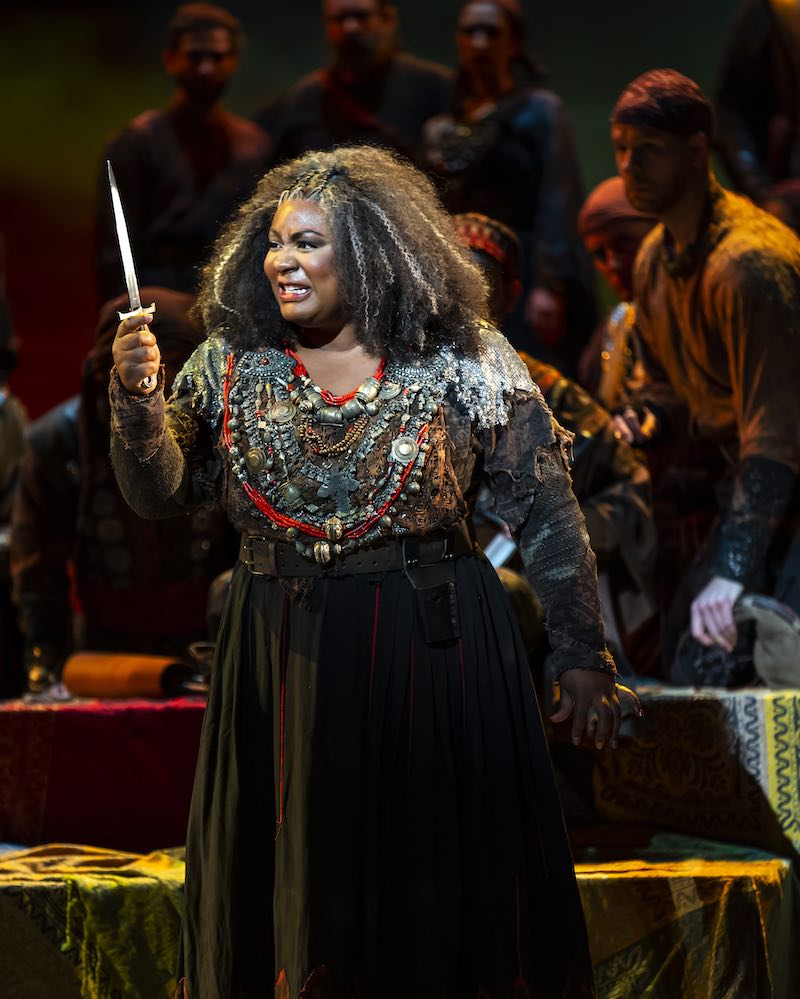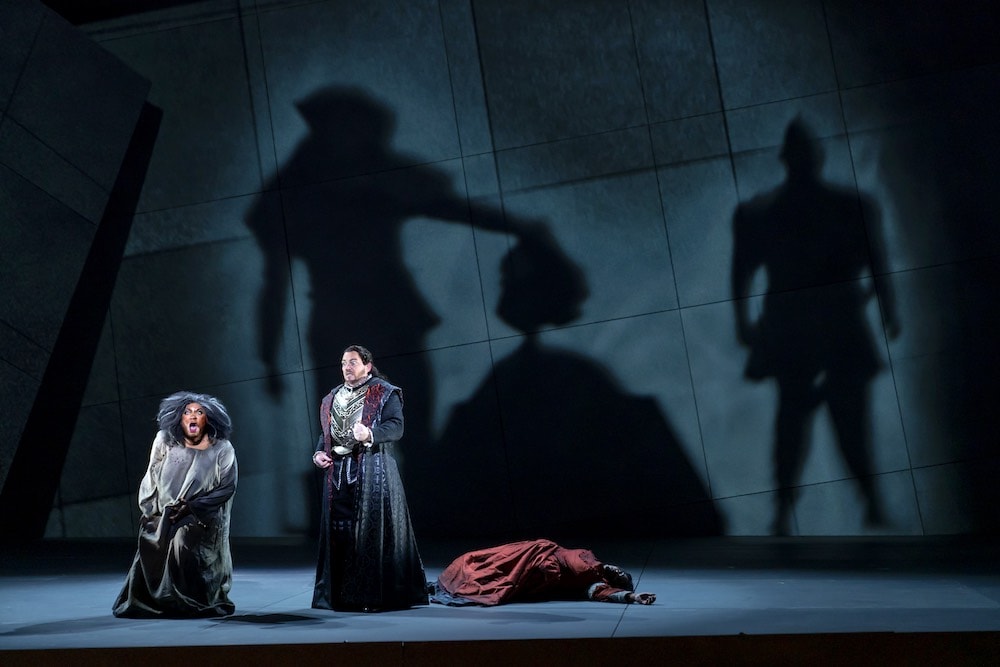Il trovatore (The Troubador) at the Washington National Opera (WNO) presents the audience with a timeless meditation on vengeance. With music by Giuseppe Verdi and a libretto by Salvadore Cammarano, this opera is anything but restrained. Under the auspices of Director Brenna Corner and Conductor Michele Gamba, the WNO presents a solid and enjoyable — if somewhat lopsided — production of this Verdi classic.

Il trovatore, which premiered in 1853, is set after a real civil war that took place in Aragon in the 1400s. The story revolves around a rebellion that occurs after that civil war. It contains elements of the supernatural, which have bound together the fates of the royalist defender of the throne Count di Luna (Christopher Maltman) and the leader of the rebel forces Manrico (Gwyn Hughes Jones). Azucena (Raehann Bryce-Davis), an old Romani woman and Manrico’s mother, watched her own mother be burned at the stake for a crime she may or may not have committed against Count di Luna’s family. Her support of Manrico’s rebellion is complicated by his competition for the love of the noblewoman Leonora (Latonia Moore). Count di Luna desires Leonora’s heart, but it has already been captured by Manrico, who serenades Leonora in disguise as a troubadour (hence the opera title).
Gwyn Hughes Jones as Manrico is stellar. He possesses a melodious tenor that’s very pleasing and projects well. His duet with Raehann Bryce-Davis’ Azucena during “Si la stanchezza m’opprime” in Act 4 was a highlight. Bryce-Davis has a lovely mezzo-soprano voice with the depth required for this complicated role. Jones and Bryce-Davis did what, it seemed to me, the other singers sometimes struggled with during this production. Verdi is not a gentle composer and requires a singer to dig deep and really work those vocal cords to project. I need to feel like I’m about to be knocked out of my seat by the strength of the performance.

This is not to say that any of the singers were bad. Latonia Moore delivered a lovely version of Leonora’s aria, “Tacea la notte placida.” Still, I felt like she didn’t really hit her stride until Act 4, where she really began to inhabit the role and loosen a bit of the restraint she had on her performance, which for this type of opera is often necessary. Christopher Maltman is a perfectly capable baritone, but again I felt like the restraint also did him a disservice.
The famous Act 2 opener, “Vedi, le fosche notturne spoglie,” also known as the Anvil Chorus, was enjoyable. The blocking was creative and the use of swords to punctuate the sound of metal striking metal in the rebel camp was well-played. Director Brenna Corner effectively used the space and the hulking set pieces to “frame” the action in a way that was engaging and, most important, clarifying with regard to what was occurring in the narrative. I’ve seen a lot of confused operas before, where the movement on the stage was clearly an afterthought of an afterthought. This Il trovatore is not one of those operas, thankfully.

The set design was stellar if complicated. Designer Erhard Rom provided a number of broad palettes for Projection Designer S. Katy Tucker to work with. The effect of their combined work was stunning. Rom’s borderline-industrial style played very well with the other design elements and provided a stark and visually interesting contrast to Costume Designer Martin Pakledinaz’s sumptuous dresses and heavy armor.
While there is room for improvement, I can’t say I didn’t enjoy this production. The design elements seem to do a lot of heavy lifting. The performances are worth seeing and are occasionally very good, even if there is sometimes a lack of the sort of devil-may-care bravado that Verdi’s composition calls for. If you are a fan of Verdi, or enjoy a good tragic opera with plot twists, you should give the Washington National Opera’s Il trovatore a listen.
Running Time: Two hours 55 minutes, including a 25-minute intermission.
Il trovatore plays through November 7, 2022, presented by the Washington National Opera performing in the Opera House at the John F. Kennedy Center for the Performing Arts, 2700 F Street NW, Washington, DC. Tickets ($49–$229) are available at the box office, online, or by calling (202) 467-4600 or (800) 444-1324.




